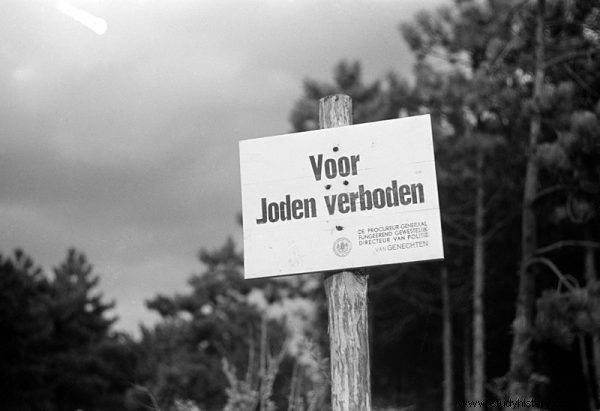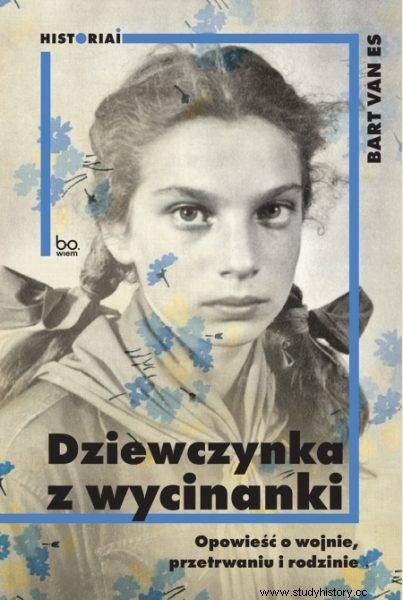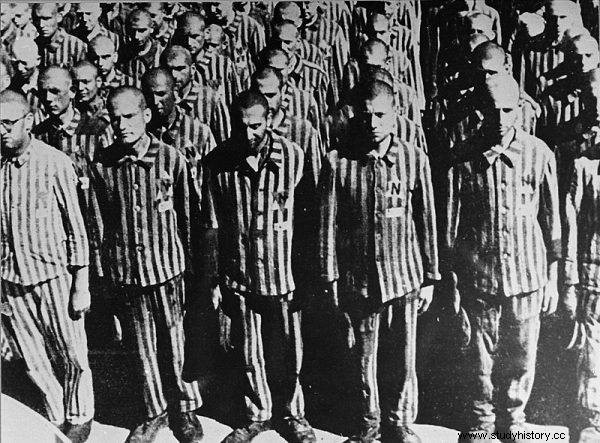During World War II, Dutch Jews experienced one of the greatest massacres in Western Europe. More than 70% of the members of this community were killed. One of the ways to survive was to hide from the occupiers. It was very often in this way that efforts were made to save Jewish children.
On May 10, 1940, the Third Reich attacked the Netherlands. Fierce fighting began in many cities. One of them was Dordrecht. There, in the first wave, the Germans dropped their paratroopers. The action was supposed not only to surprise, but also to take control of the bridges.
The goal has been achieved. Although 1,500 soldiers were stationed in the city at that moment, they were not prepared for the enemy. The Dutch army did not have much experience in the war. Most of the soldiers did not even undergo full combat training, and the ammunition was hidden in the city's central warehouse for safety reasons.
However, neither of these circumstances resulted in capitulation. After shaking off the shock, the Dutch began a fierce fight for freedom. Many of the attackers were killed, some 80 captured and sent back to England. However, despite the heroic struggle, on May 13, Dordrecht and the rest of the country were captured by the Nazis.
An intimidatingly effective extermination
The Nazis took control of the government and began implementing anti-Semitic policies. In 1940, approximately 140,000 Jews lived in the Netherlands, most of them in Amsterdam. The unexpected invasion and quick occupation prevented any preventive measures to be taken to defend this community.
Persecution soon began, which eventually led to the massacres of y. About 107,000 Dutch Jews lost their lives during World War II. Thus, more than 73% of the members of this community were lost which is an alarmingly high number compared to other countries. In Belgium, the Holocaust took 40% of the Jews, France lost a quarter of them.

From September 15, 1942, in the Netherlands, signs hung in public places, saying:"Jews are not allowed"
Dramatic attempts to save were made. According to estimates, about 16,000 people tried to hide in the Netherlands. About 12,000 were detained and sent to camps.
One of the ways to save them was to hand over the Jewish children to the Dutch who, risking their own safety and often exposing themselves to contempt, loss of good name and even death, hid toddlers and sometimes entire families in their homes. The story of one of the girls saved thanks to this from the occupant was described many years later by Bart van Es in the book Little Girl with Paper Cut. A tale of war, survival and family. ”
Children at war
Children very often did not realize what was going on around them. For the youngest, the war was a distant slogan that manifested itself in even more distant things. As we can read in "The Cutout Girl":
In Lien's memoirs, the war suddenly appears in May 1940, when Germany occupies the Netherlands. As she stands with her mum and dad, she watches the planes high in the sky. "There is war," parents say. Apart from that, not much is happening. German soldiers sit at tables in cafe gardens, and sometimes walk around the streets. They behave friendly. But slowly and gradually everything starts to change .

The text was created, among others based on the book by Bart van Es, "Little girl from the paper-cut", which has just been released by the Bo.wiem publishing house
From September 15, 1942, in the Netherlands, signs hung in public places, saying:"Jews are not allowed". The little-year-olds didn't really know what it meant. Like Lien:
Hitler actually makes Lien a Jew. Although her parents belong to a Jewish sports club (in the group photo of the club members we see her father in thick knee-length socks and a T-shirt open at the neck), they are not particularly attached to the Jewish tradition. They eat matzah during Passover and, influenced by the family, they got married in a synagogue.
Seven-year-old Lien believes in Santa Claus, and remembers to this day how furious she was when she was told he didn't exist. Convinced that the adults mocked her, she hides in a hiding place under the stairs that lead to the apartment on the second floor, overwhelmed with anger and shame.
Lien, like many other little Jews, was placed in a foster family in the hope of rescue. Everything was going quite well at first. Until the girl revealed to her friend that she was Jewish. Then the events moved quickly. Lien was transferred to another family, and so the game began for her where her life was at stake.
Not all the little charges of foster families were so lucky. They were parting with their real parents, for whom saying goodbye was a drama - they were aware that they would probably never see each other again. However, they gave up their children and experienced all the pain it brought. Unfortunately, it happened that they met in a while - in a concentration camp.
"The girl from the cutout" put back together
Lien as a little girl did not realize the danger. She did not know what was happening in the "big world". For her, the war was something distant - what mattered was here and now. But with each move, her life became less and less meaningful. She was losing a bit of herself with every change of place.
The child does not understand why one family after another hand them over to other strangers. There are thoughts in his head that create a conviction that it is because he cannot be loved, that he has no value as a human.

Dutch Jews in the Buchenwald camp
Even the liberation from the occupation did not bring Lien understanding. On April 17, 1945, the war ended in the Netherlands. People took to the streets, children ran out into the fresh air, catching the first rays of the sun in a long time:
Lien runs with a group of children, jumping over chunks of rubble and balancing on the shaky remains of walls. In a side street they come across the body of a German soldier. A corpse with a helmet over its head is lying on the pavement, face down, with one arm extended forward. The children stare at him in bewilderment - frightened, unsure if he will suddenly move - but after a while one of the girls takes a step forward and lightly kicks the dead soldier in the head. Now one of the boys joins her, and then other children, emboldened, kick the inert body. When it is Lien's turn, the corpse she nudges with her foot feels surprisingly heavy to her.
There were many more children from cut-outs like Lien - are we able to piece their stories together? Often they had no idea what was happening to them, but were saved. You might think they should be grateful and happy for this. However, their lives were often associated with tragic experiences. With ignorance, fear. Girls who do not know when they became women on this path often fell victim to rape. Their torturers knew that they had no choice but to submit themselves to the harm done to them in silence.
Lien went to different places and approached each one with increasing distance. Not only her family was deprived of her, but also her childhood, dignity and faith in unconditional love. Wounds were inflicted that left a great deal of trauma. They made her unable to find herself in a free society. It was only the accounts of other survivors, a visit to the Museum of the History of Jews, and constant work on herself that allowed her to put her life together. You will learn about Lien's story in the newest book by Bart van Es, 'A girl from a paper-cut. A tale of war, survival and family. ”
Literature:
- Bart van Es, The girl from the cutout. A tale of war, survival and family , Krakow 2021.
- Marnix Croes, The Holocaust in the Netherlands and the Rate of Jewish Survival , "Holocaust and Genocide Studies", V. 20, No. 3, 2006, pp. 474-499.
- Brief History of the Holocaust in the Netherlands , Montreal Holocaust Memorial Center (accessed on 1/24/2021).
- Pim Griffioen, Ron Zeller, The Netherlands:the greatest number of Jewish victims in Western Europe , AnneFrank.org (accessed on 24/01/2021).
